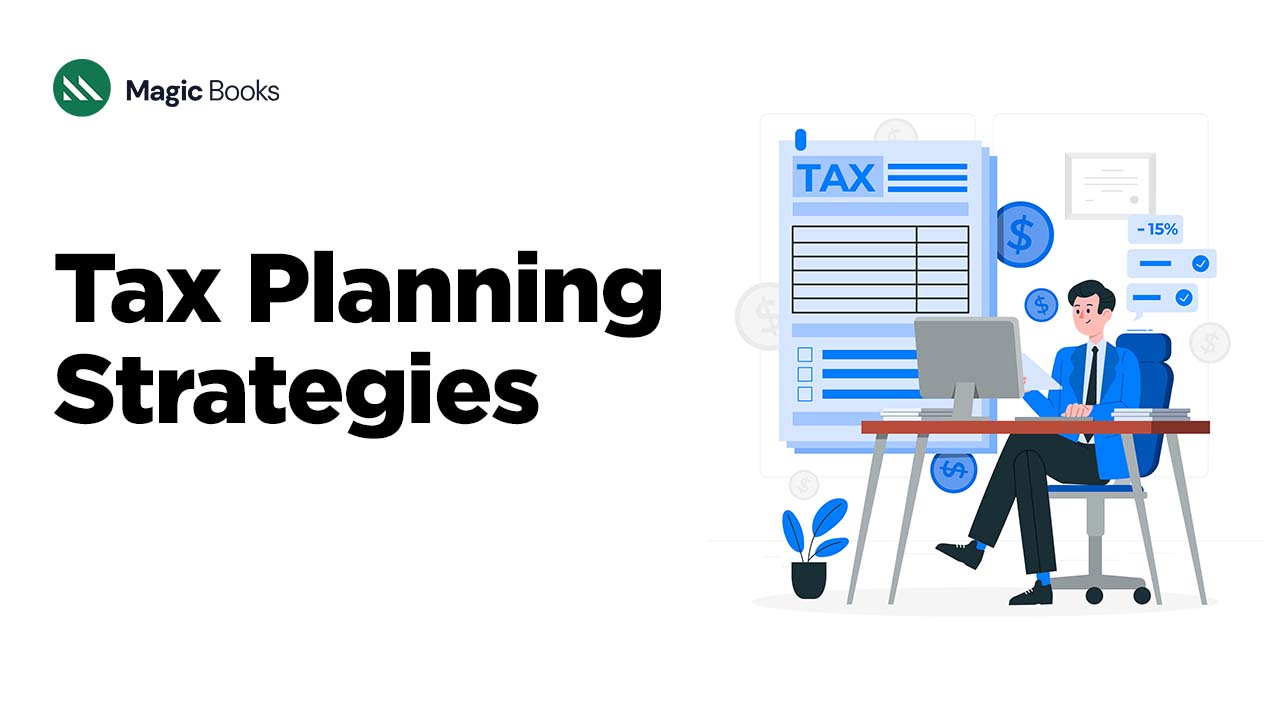Taking that one step towards being self-employed will seem exciting and nerve-wracking at the same time. You might be the subject of envy within your 9-5 groups as well but one thing they might know is that the tax process for self -employed is a little more complex than theirs. We are not trying to add more weightage to the “nerve wrecking” feeling you already are having but we are here to simplify something extremely important that you might end up missing because you are busy with other aspects of your work – Tax.
That one word can send shivers down the spine due to its complex and tedious nature. But trust us, it’s not that complex. By the end of this blog, you will feel more confident about your tax planning and payment without any inaccuracy and delay.
So first things first, whether you are a freelance writer, painter, candlestick maker or even a sole owner of a SaaS product, you need to maintain accurate and up-to-date financial records which include Profit and Loss statements, equipment purchase details, auto expenses and utilities-related bills. This will help you have all the necessary information at the fingertips to file the tax returns.
Now, you need to pay self-employment taxes which will include Social Security and Medicare Taxes. They are assessed on a percentage of your net earnings. In 2024, these need to be paid if you earn $400 and more. So, to pay taxes, you need to have your net profit figured out.
Also Read: Financial Planning for Startups
Your tax filing process always gets more complex with all these new forms and schedules to report your business income, expenses, deductions, and self-employment tax liability. It can sound exhausting but its important to know common new filings which usually include:
- Schedule C – Business income and expenses
- Schedule SE – Calculation of self-employment tax
- Form 8995 – Qualified business income deduction
- Form 4562 – Depreciation of business assets
Lets get you to that mindset:
Whenever you used to collect regular paychecks, your employers used to pay the income tax on your behalf. They usually withhold federal and state taxes and remit payments to the IRS and state revenue agencies. Please remember that taxes usually don’t automatically come from your income. So as a sole business owner you are responsible for calculating, reporting and paying your income tax through estimated payments. If you fail to do so, you will need to pay underpayment penalties from the IRS which is around 8%.
You also need to pay double the self-employment tax compared to payroll tax as a W-2 Employee. Remember, you need to handle all your expense tracking, and bookkeeping to support the figures on your tax return.
Here is another note: You need to handle all your income and expense tracking, bookkeeping and backups to support your tax return. As an employee, you will submit expense reports for reimbursement but most likely won’t deal with full-scale accounting and financial statements.
Did we just overwhelm you? Stop hyperventilating!
Let’s take a step back and let us tell you what tax deductions you can benefit from this.
Tax Deductions:
Here is a look at what tax deductions you will enjoy as self-employed folk. Some of this is not accessible as a W-2 Employee.
Vehicle Mileage:
Did you know that the IRS lets you deduct 65 cents per mile which is driven for purposes in 2023? If you are using your vehicle a lot, you might need to consider deducting the actual costs like gas, maintenance, and insurance based on the percentage of business use. If you are not used to jotting down the mileage in your personal life, well get used to it now if you want that sweet deductions
Phone and Internet Charges:
If you are not using a phone in today’s day and age, then you must be in the 1950s or 60s. Since it’s not the case, lucky for you, they are deductible as well, only if it’s used for the business. So no personal calls are deductible. Remember to estimate the percentage that applies to work and use that as your deductible amount.
Retirement Savings Contribution:
You know what’s the biggest advantage of being self-employed? Other than financial freedom and more time with your family, you can set up retirement plans like SEP-IRAs, Solo 401(K)s or SIMPLE IRAs. This will allow you to make substantial pre-tax contributions. For 1014, you can contribute up to $23000 in pre-tax earnings to a 401(K) plan, plus an additional $7500 if you are 50 or older. You also can contribute up to 25% of your net self-employment income up to a total of $69,000 for 2024, or $76,500 for those 50 or older into a retirement plan like an individual 401(k) plan.
Tax Preparation Fees:
If you work with a CPA or tax software, the portion directly related to your business can be written off as a necessary expense.
Home Office Deduction:
If you are operating from home, you just hit the jackpot because you are very much entitled for a deduction. You can write off rent, utilities, mortgage interest and insurance. To qualify for this though, your workspace needs to be used regularly and exclusively for business and only a percentage of total home expense is deductible, based on the size of your office.
Business meals:
Having those long business meals with your clients, is your client taking too much time to explain what they need and is the bill shooting up to the stars? Don’t worry, let the bill go up because the IRS typically allows a 50% deduction. In case of networking events, you are even eligible for a 100% deduction. Make sure to keep a record of it though.
Qualified Business Income (QBI) Deduction:
Let’s say you are a sole proprietor, patron in a business or S-corp shareholder, you can be eligible for the QBI deductions. This could mean up to a 20% deduction on your net income. But this does have a phase-out and other limitations based on your income and the nature of your business. So make sure to read about it.
Also Read: Boost your financial fitness with the 50/30/20 rule
Now that we have established the deductibles, its time for us to tell you how to be the master of tax payment when it comes to being self-employed:
Timing your Income:
For tax purposes, income is generally taxable when it’s available to you. While you can’t delay income simply by not cashing a check, you do have some control over when you send invoices or receive payments. Additionally, for capital gains, you might choose to sell assets at a profit before or after the tax year, depending on which scenario is more beneficial.
Timing your Business Expense:
Expenses are counted for the year in which you purchase them, even if they are paid later through a credit card or a deferred plan. Let us give u an example. Let’s say, you are buying equipment at the end of the year, which starts depreciating right away. In this case, you should avoid over-purchasing supplies or inventory before year-end if they’re unnecessary since you can only deduct costs for goods once sold.
Take advantage of Medical Insurance Deductions:
Self-employed individuals who are usually ineligible for employer provided health coverage can deduct health insurance premiums for themselves, spouses and dependents. This can also include premiums for long-term care. Remember, the policy doesn’t need to be under the business name. Just ensure that it’s active and meets the requirements to qualify for this deduction.
Avoid the IRS Hobby Classification:
Oh this is something you need to keep in mind. It’s really important that you don’t get business classified as a hobby. It will disqualify expenses deductions. Operate it in a businesslike manner and make sure to show profit for at least three out of five years. Even if it’s a hobby, you are still required to report income but it’s not subject to self-employment tax.
Charitable Contributions to Business Expenses
While charitable donations are not deductible on Schedule C, they can be qualified as business expenses if its given in exchange for advertising or other business-related benefits. This often gives a higher tax benefit than your typical donation, as long as you maintain documents related to what you received in exchange for the donation.
The Alternative Minimum Tax (AMT) Liability
This is a parallel tax calculation method that can usually impact high earners. It limits the benefit of some deductions such as state and local taxes, and uses different tax rates which can be around 26% or 28%. If it exceeds your regular tax then you need to pay the difference. So you can check potential AMT impacts on IRS Form 6251 and adjust your planning if needed to minimize your AMT liability.
Automate the Bookkeeping process
We live in such a fast-paced world, it would be ideal to stick to pen and paper or Google sheets. Usually a lot of self-employees rely on these financial software to automatically track income and expenses and they usually sync with your bank accounts for easy data capture. They save a lot of time, eradicate manual errors and the tax filing process becomes smooth sailing.
KISS
We mean the whole “Keep it Simple Stupid” philosophy when it comes to keeping your business structure. This will allow you to report your income and expenses on Schedule C (If you take the Sole proprietorship route). This option also simplifies the process if you’d decide to move on from the business. It’s important to consult with an attorney about the potential benefits of forming an LLC or purchasing liability insurance.
So, there you have it. We have provided you with all the information you need to start your self-employment business. It’s important to understand and be educated about it. Most importantly, you should keep tabs on changing regulations. We know launching your own business can be really exciting but the IRS won’t give you any leeway. It’s really essential to understand the tax obligations and line up the accounting support you need and please take advantage of every tax deduction and money-saving strategy thats available out there.


